It was a matter of perfect timing that allowed RPG house, Level 5, and Studio Ghibli to collaborate on Ni no Kuni: Wrath of the White Witch and create the DS version that came out in 2010. The PS3 version would need something more, so with Studio Ghibli's help, Level 5 broke down the game and built it back up to take advantage of its new home.
Ni no Kuni packs in both well-acted English and Japanese voices to allow anime buffs the option of mixing together Japanese and subtitles. The only downside was that switching between subs required uninstalling the gigabytes of data it installed as a mandatory procedure. Swapping voices, however, is as easy as picking what you want before starting the game.
Players are introduced to Oliver, a young lad living in the small town of Motorville that seems to be set in the 1960s. He has dreams of adventure and excitement, but unfortunately, an accident nearly kills him, and in the process of saving his life, his mother unexpectedly dies.
A few days later, he discovers that the tag-along doll his mom had given him long ago is really the Lord High Lord of the Fairies, Drippy, whose curse was broken with Oliver's tears. Drippy tells Oliver that there may be a way to save his mother — and Oliver might be the chosen one whose pure heart can save Drippy's world.
Ni no Kuni's story feels cast within the same mold as Studio Ghibli's fairy tales, which are replete with talking beasts, larger-than-life NPCs, mysterious castles, and good-hearted pirates. Oliver also has the ability to "heal" the hearts of those who have been broken by the big baddie of the world, Shadar. By doing so, Oliver earns merit stamps that can go toward upgrades. All of this provides a refreshingly innocent charm that can worm its way into your heart like any of Studio Ghibli's films. If you're looking to lock horns with a Kafkaesque villain or change the fate of nations through clever politicking among NPCs, this isn't the game for you.
It's toward the end of the game that the story falters. By the end, Oliver has become mini-Merlin, but the twists and turns of his story can often be surprisingly warm and unexpected, and that helps to keep players focused on his personal story. Ni no Kuni tells a story at every opportunity; you can even read the in-game Wizard's Companion Book, which is filled with tales from Oliver's journey.
From the look of its characters, the animated cut scenes driving home the story's key points, and the music delivered by the Tokyo Philharmonic as arranged by veteran Joe Hisaishi, Ni no Kuni could pass as a film that Studio Ghibli wanted to make but decided to put into a game instead. Level 5's old-school chops stitch together reams of statistics, management menus and vast inventories, making me wish that it had lent some of this expertise to a few other console-based RPGs.
However, Ni no Kuni is far from perfect. Without Studio Ghibli's participation, most of the game mechanics are average for a JRPG. The combat engine doesn't leapfrog over genre staples. Level 5 has leveraged its old-school approach refined through its work on Dragon Quest VIII and IX and even includes a similar alchemy system. In this case, the combat formula has a few snags.
The ideas sound great: Players can collect familiars, train them like Pokémon, and launch them into battle and fight through them. Though a stamina meter decides how long each minion can fight before needing to rest, the main characters don't have that restriction. With as many familiars as there are in the game, the variety of attacks and skills creates an option-filled canvas for player strategies — or so it seems.
At times, Ni no Kuni's combat system feels as if it's fighting itself. Familiars butt against others in their way, swinging ineffectually and wasting valuable attack time due to poor path finding. Setting behaviors for my party members didn't always get the desired results; a member could have a familiar that heals everyone in the party from poison — but never uses it.
What all this added up to was a degree of clunky hand holding to avoid party wipes, though Level 5's mash-up of paused action and real-time also created something of a clumsy balance within the sum of its parts.
A number of real-time combat systems in RPGs allow players to pause the action, issue orders, and then have those orders executed or actively changed on the fly. Ni no Kuni's odd placement of pauses and real-time elements can't decide whether it's in the arcade or an RPG. Flipping through menus won't pause the action, but it'll pause when you go into an extended menu, such as Spells. It reminded me of how I memorized the number of dragon forms to skip to reach the one I needed in Panzer Dragoon Orta, but in this case, it's with menus.
Other things seem more sensible. Picking a new familiar or character pauses the clock. Initiating an action puts it on its own clock. For example, Defend blocks attacks for a time, but if you interrupt it and try to use it again immediately after attacking, you may have to wait until it completely cools down to do so. If it cools down completely and you want the action to continue, players need to mash the button again to keep it going. The same goes for spells or using items from the inventory.
In-combat cinematics by enemies with special attacks also have an aggravating tendency to cancel out whatever action you're in the middle of doing. These aren't even Final Fantasy-sized special attack cinematics. It's the gaming equivalent of a referee telling your party to take a time-out even if the call doesn't affect anything. If you're interrupted in the middle of combat with a legitimate attack, which happens and makes sense, that's fine.
Grinding is also a frequent issue with the number of collectible familiars. Every new buddy added to the roster starts at a set level, and it's up to you to grind them up to become powerhouses to take into battle. After 20 hours or so, I settled on a group of familiars that I'd carry with me for the rest of the game. The frequent grind would've been more numbing if it weren't for the chance discovery of a place where a certain, easy-to-kill beastie dropped buckets of experience and ingredients for alchemy mixing.
Evolving familiars also drops them to level one, though they retain all of the skills they had learned along the way, leaving you to grind them back up. They can morph for a second into one of two final forms to become a super familiar. Toward the end of the game, you'll also fight a lot of "final form" familiars. You'll need to serenade them with Esther, since she's the only party member who's capable of catching them all.
Alchemy, which has become something of a Level 5 tradition, adds more hours to its already impressive campaign length, though its usefulness is varied. By the time the game enters its final phase, powerful items are available from stores or special chests. Not every familiar uses the same mix of equipment, and by holding onto specific ones, there isn't much of a need for alchemy.
Ni no Kuni succeeds in holding onto your imagination right up to the climactic end. For Studio Ghibli fans, there's no question that this should be a part of their collection. What it lacks is more than made up for by the lush world that its collaboration with Level 5 has created, whether it's flying off into the rosy horizon from the mountaintop town of Perdida or befriending monsters on a tropical isle.
Ni no Kuni: Wrath of the White Witch is a breathtaking place with the wistful charm of Studio Ghibli's works. With a long roster of side-quests, an open word filled with secrets, clever puzzles, and some of the best-looking credits in any game, you can almost overlook the sharp edges and lackluster AI by focusing on the cel-shaded glow of the magic around one of the rarest, and most spectacular, team-ups anywhere.
Score: 7.7/10
More articles about Ni no Kuni: Wrath of the White Witch


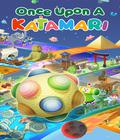
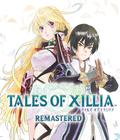

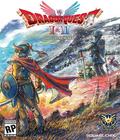



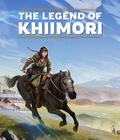

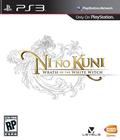 Ni no Kuni: Wrath of the White Witch is a fantasy RPG telling the heart-warming tale of a young boy called Oliver, who embarks on a journey into a parallel world to become a magician in an attempt to bring back his recently-deceased mother.
Ni no Kuni: Wrath of the White Witch is a fantasy RPG telling the heart-warming tale of a young boy called Oliver, who embarks on a journey into a parallel world to become a magician in an attempt to bring back his recently-deceased mother.





































